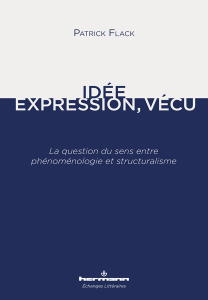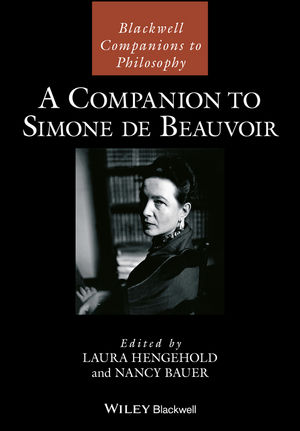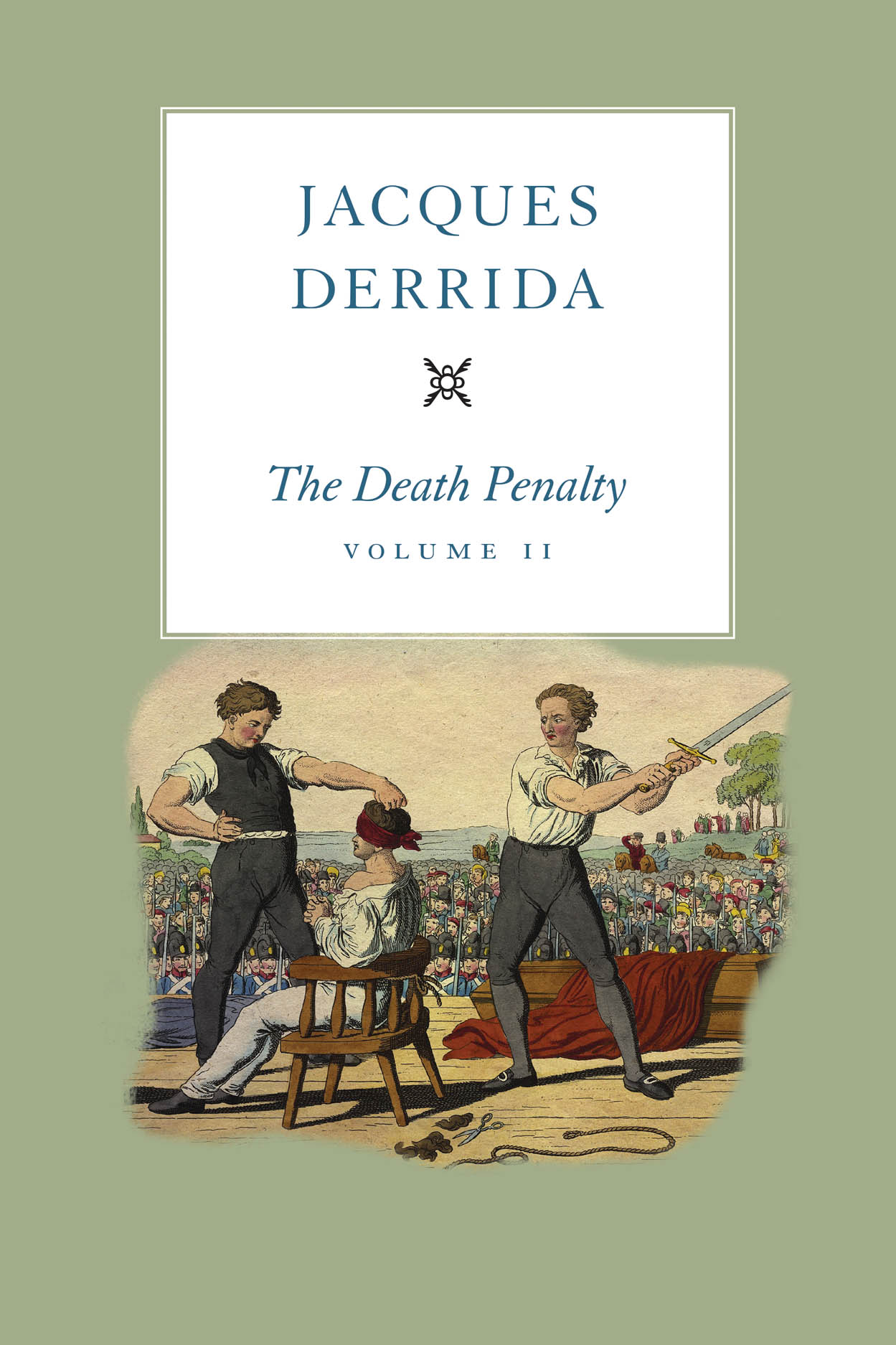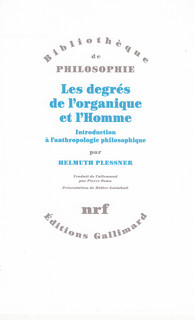 From Violence to Speaking Out: Apocalypse and Expression in Foucault, Derrida and Deleuze
From Violence to Speaking Out: Apocalypse and Expression in Foucault, Derrida and Deleuze
Edinburgh University Press
2016
Paperback £19.99
320
Reviewed by: Lode Lauwaert (Husserl-Archives: Center for Phenomenology and Continental Philosophy, Institute of Philosophy, University of Leuven)
Beyond Technicity: On Violence and Otherness
For two decades — and certainly since the bloody attacks in London, Paris, and Brussels, among others — on the old continent and elsewhere, people have the impression that violence has increased worldwide. Even though leading scientists claim that humankind is constantly improving (life expectancy has increased, environmental awareness ameliorates, etc.), it seems that there is more violence than there was roughly two centuries ago. However, the question is whether this impression is justified or not.
According to some, including linguist Steven Pinker (2012) and historian Ian Morris (2014), it is in fact not the case that violence is on the rise. It may be that we believe ourselves to be living in the cruelest of times, yet that impression lacks solid ground. Moreover, according to both Pinker and Morris, the fact that there is such an impression has everything to do with the fact that there are fewer and fewer acts of violence. It is precisely because our living environment has become safer that we have become more sensitive to everything that relates to violence, whether it actually ‘is’ violence or not. This is what has ultimately led to the misconception that violence is on the rise. Although this explanation seems plausible, it nevertheless raises many (especially methodological) questions. Is it possible, for example, to make scientifically reliable statements on this subject, given that we know that acts of violence are now being recorded more frequently than in the past?
Although there is great disagreement among scientists concerning the question of whether violence has increased or decreased, there is no doubt that the scientific interest in violence has increased considerably in recent years. This is not only the case in disciplines such as history, sociology, and psychology, but also in philosophy. Since the beginning of the twentieth century, and specifically since the pioneering work of, among others, Walter Benjamin and Georges Sorel, thinking about violence has a firm footing in philosophy. This increase in the philosophy of violence applies to different domains within philosophy. For example, in analytical philosophy, Robert Audi focuses on analyzing the concept of violence, whereas in normative ethics, thinkers such as Michael Walzer work within the ancient tradition of Just War Theory. And with regards to the tradition of continental philosophy, it is clear that, for example, (post)structuralists reflect upon the relationship between power and violence, and that phenomenologists focus on the experience of violence.
If we zoom in on the phenomenological tradition, we see that violence has also become an important topic there. In this context, we are, of course, thinking primarily of the works by Jacques Derrida and Jan Patočka, but more recent authors within that tradition are also considering this subject matter. Take, for example, the volume The Phenomenologies of Violence (2014) by Michael Staudigl and two studies by James Dodd: Phenomenology and Violence (2009) and Phenomenological Reflections on Violence. A Skeptical Approach (2017). Within this line of thought we must also situate the last study of Leonard Lawlor (Edwin Earle Sparks Professor of Philosophy at Penn State University): From Violence to Speaking Out. Apocalypse and Expression in Foucault, Derrida, and Deleuze, in a beautiful edition published by Edinburgh University Press.
It would come as no surprise if, in the future, this study was to become one of the most influential philosophical contributions on violence. There are several reasons for this: not only because the author’s profound knowledge of the subject is evident, but also because of his original approach. The point of departure of Lawlors’ study are two phenomena that, at first sight, have little to do with each other but which, it is argued, have the same ground structure. The first phenomenon is the contemporary late-modern variant of capitalism, namely neoliberalism. Lawlor argues that neoliberalism is primarily characterised by the fact that all subjects and all objects acquire a kind of value in order to be exchangeable. The author emphasizes not so much the economic logic behind this, but the regime that lies behind that logic: everything is comparable to each other, so everything falls under the name of the One. This logic is not limited to the West alone, however, but spreads to all corners of the world. Capitalism oppresses all local lifestyles and rituals, making them a commodity on the global free market. Today’s capitalism can therefore be described, following Lawlor, as the globalisation of commodification.
The second phenomenon from which the author begins his study is likewise a form of violence that, however, takes place on a more individual level and is always physical. In this category, Lawlor primarily gives the example of hate crimes committed by Einzalgängers, whereby an individual indiscriminately kills passing civilians in a public space, and finally kills himself (in an act of murder-suicide). Of course, the countless (often religiously inspired) suicide attacks in which a perpetrator inflates himself with the aim of killing as many innocent people as possible, also fits into this category. The logic behind these murders is crystal clear, according to Lawlor: anyone who has a different way of thinking from the murderer (usually atheists or other believers) must disappear from the globe. This form of violence is characterised by globalisation. The shootings and suicide attacks do not only occur in the West and North, but also in the East and South; they are furthermore not only carried out in the name of Christianity or Islam, as we know, there are also Jewish or Buddhist inspired terrorist attacks. In short, just as neoliberalism is all-encompassing, physical violence is both total and limitless.
Many scholars believe that there is a causal link between the two phenomena. The physical violence, such as religiously inspired suicide terrorists, is a reaction to the violence of neoliberal capitalism. Moreover, the same scholars also stress that although these two phenomena are causally linked, they differ fundamentally in ontological terms. Lawlor distinguishes himself from these scholars, first of all because he does not make any statements about a possible causal connection. This is actually not particularly surprising, since making such empirically verifiable claims is not the task of the philosopher, but of the social scientist. More importantly (and philosophically more relevant) is that Lawlor argues that the ground structure of both phenomena is clearly the same. Broadly speaking, one can argue that both fall under the primacy of the One, which means that, in both cases, the other is radically ignored, or worse still: destroyed. Or to put it in Heidegger’s jargon (which is virtually absent from Lawlor’s study, although traces of the German philosopher’s ideas can be clearly sensed therein): both neoliberalism and physical violence are the cruel expression of (a platonic-inspired) onto-theology. However, on the other hand and following Lawlor, we must not lose sight of the differences between the two kinds of violence that suppress the other. While capitalism is displacing the other by expressing everything in economic value and thus making it interchangeable, suicide bombers will kill anyone who does not like their dogmatic view of the world.
Both phenomena are referred to by Lawlor, after Derrida’s famous expression, as examples of “the problem of the worst violence”. Before we expand upon this topic, I first reflect on Lawlor’s understanding of globalisation. Globalisation, in its common use, connotes a certain levelling of intercultural differences. The author shares this deeply rooted belief, but never explains why we should accept it. This assumption is striking, not only because it is the starting point of the study, but also, and above all, because it is not at all certain that this claim is as justified as it appears to be. Slavoi Žižek (2004), for example, argues convincingly that globalisation is characterised by the opposite; namely by the opening-up of the Other. But let’s assume, for the sake of the argument, that Lawlor is correct. In that case, is it justifiable to state, as Lawlor does, that the neoliberal hegemony is nothing other than violence? Indeed, the author believes that the failure to respect the otherness of the other — of the face, to employ Lévinas’ term — also means that violence is done to this other. If Lawlor does not understand ‘violence’ here in a metaphorical sense — and that is something we can take for granted, given the structure of the study — then the author allows the meaning of ‘violence’ in this context to fit in with the etymology of the word. One of the original meanings of the Latin violare was “crossing a moral border”. This assimilation of violence and violation is not further justified by the author. This is also striking, because violence and violation do not necessarily encapsulate each other. For example, it is clear that most but not all forms of violence imply the transgression of a moral border. A building company can destroy a building by means of explosives in order that the construction of a new building may begin in its place. Likewise, it is common in various fight sports to “play hard”, to tackle or kick, for example, a member of the opposite team in order to win. In both cases, we speak of violence without exceeding the limit of what is permissible. Conversely, of course, it is not the case that “violation” means that an act of violence was committed. Lying, for example, is usually interpreted as an act that is morally reprehensible, while we do not typically understand it is a form of violence.
After emphasizing the ontological similarity between neoliberalism and physical violence (shootings, religious terror, etc.), Lawlor makes a new step in his line of argument. With this step, the author addresses the transcendental level, in the Kantian sense of the word. After all, Lawlor aims to explore the conditions of possibility of experience, more specifically, the experience that a subject has of himself and of the way that subject experiences the other. Lawlor explains that the two phenomena mentioned earlier (neoliberalism and physical violence) are both a reaction to the transcendental structure he exposes. This is, at the very least, a surprising statement especially as most researchers look primarily at psychological and socio-economic factors to explain violence. Let us therefore focus on the transcendental part of the study, a part with which the author, who previously published intriguing studies such as The Implication of Immanence and This is not Sufficient, once again demonstrates why he is one of the most prominent scholars in continental philosophy.
The starting point of Lawlor’s transcendental research, about which the author is explicit, coincides with the phenomenological reduction, which breaks down into two steps. First, the scientific attitude, and second, the natural attitude is replaced, meaning that any belief in the existence of the world that exists independently of experience is given up. When all external assumptions are suspended, phenomenology ultimately collides with consciousness; that is to say, we end up with the most fundamental level of auto-affection and internal monologue. More importantly, however — Lawlor clearly indicates that he owes much to countless phenomenological and Bergsonian thinkers — this auto-affection is not absolute. The reason is that it is marked by the movement of time. How should we understand this?
When we state that Lawlor’s study is based on earlier research, we mean that the author is very clearly on the Derridean trail². More specifically, he refers to the ingenious analysis of time consciousness in La Voix et le phénomène from 1967. This earlier study highlights the two following aspects of time consciousnesses: On the one hand, this analysis shows that experience in the present always differs from the past. There is a gap between the present and the past and we clash with alteration. This means, according to Lawlor, that the movement of time can be described as an event (here, Lawlor employs fashionable terminology, it seems, somewhat indiscriminately). Lawlor’s remark about “events” is all the more compelling since his study does not seek any connection with recent work on “the event”, and also because he uses “event” here in a very broad sense: not every alteration has an eventful character. On the other hand, we also know that the present can be remembered and thus be repeated, so that it installs the expectation that the same will also take place in the future. In short, besides difference there is always also repetition, to speak with Deleuze. Or, in the vocabulary of Lévinas (who, incidentally, is as good as absent in Lawlor’s study): the movement of time must be understood in terms of le même and l’autre.
This double structure is the ontological foundation for both the experience that the subject has of himself and for the experience that the same subject has of another person. First, looking at self-experience, we must ask ourselves whether we really hear ourselves talking when we speak to ourselves. According to a long tradition in phenomenological research, we must answer this question negatively, which means that every auto-affect is less pure than one usually assumes and is always hetero-affective. Lawlor endorses these findings, as we read in the following passage (which illustrates the clear and sometimes evocative style of Lawlor): “In other words, we must unlearn how to hear badly, hearing only oneself, and learn to hear better, so that we hear those others inside of us. The essential fact that the sphere of interior life is not strictly my own implies, positively, that there are others within me.” (282) This ambivalence between sameness and otherness also characterizes interpersonal relationships. On the one hand, I am involved in a performance that is inextricably linked to the signifier “man”, which I employ every time I meet a member of the species of man, whereby I immediately recognize living beings that are human beings as such. It is precisely this representation that gives the interpersonal relationship a repetitive character, and thus also ensures continuity. Lacan, with whom Lawlor himself does not enter into discussion, would argue that the relationship with the other has an imaginary meaning in this context, and is the result of an identification with the overall image of the other. On the other hand, the relationship with the other can never be completely homogenised, so that the other never fully merges into the image we have of the other, and so that the other inevitability is permeated by strangeness and otherness. In this context, Lacan would speak of le réel; Lévinas has taken that dimension into account when he talks about the distinction between le visage on the one hand and la face on the other.
The fact that the homogeneity of the other is always partially cancelled by heterogenization is violent, according to Lawlor. More specifically, he refers in this context to ‘transcendental violence’. Once again, we can raise the question that we have already asked (especially because Lawlor himself remains completely silent on this): why, precisely, is the heterogenization of homogeneity a form of violence? Although it may be the case that the abolition of equality is regrettable, it does not necessarily mean that it is violent. There are, in fact, many things that we would prefer to see continue to exist, without describing them as violence. Moreover, Lawlor seems to forget that ‘violence’ is a normative concept. It brings together deeds that may not all appear to be unjustified at second glance (because of utilitarian considerations) but, at the very least, those deeds are prima facie morally wrong because they stem from the intention to inflict harm. However, my question to Lawlor is this: how can we describe a transcendental given (the heterogenization of the homogeneous) as violent given that it inevitably occurs and, more importantly, since such heterogenization does not result from an intention? This transcendental violence, in addition to the two forms of ‘worst violence’, is the third violence that Lawlor distinguishes. Apart from the fact that he never explains why he understands these things as violence, he also never explicitly indicates his definition of transcendental violence, and what exactly the differences and similarities are between the three forms of violence. These lacunae are extremely puzzling for a philosophical book, the title of which suggests that it is primarily about violence.
This critical note to Lawlor, however, does not change the author’s original position in the debate on violence, especially in the philosophical debate. The central thesis of his book is that both forms of violence must be understood as reactive phenomena, a position that runs counter to the thinking of a number of prominent thinkers. Freud, for example, in his writings on war and violence (think of the famous correspondence with Einstein, published as “Why war?”) argues that the propensity for violence is in human nature, which means that it regularly comes to the surface and must then be satisfied. Such a view, which can also be found in Georges Bataille, among others, is interesting because violence is understood as the expression of a force, and therefore as an active fact. Lawlor goes against this by claiming that the violence to which he refers is rather an answer to another prior fact. More specifically, he defends the proposition that the two forms of violence are a reaction to fundamental violence. Or better formulated: both forms of violence are a reaction to the inability to deal with transcendental violence, more specifically the fact that the self-experience and experience of the other person are not only a matter of repetition and togetherness, but also of difference and otherness. However, Lawlor rightly emphasises that we must not lose sight of the differences in the way in which both forms of violence specifically deal with this inability. For example, if we look first at the hate crimes and religious terror, according to Lawlor, this is based on the fact that the subject’s identity has always been marked by differences. Terror, understood here as the radical destruction of any radical other thing, is an attempt to destroy the other person who has always been part of me. Second, if we focus on the violence of neoliberalism, on the other hand, we see that this violence is trying to reduce the other’s ‘differentness’, to homogenise the other. In Lacan’s vocabulary: neoliberalism brings the other into the register of the imaginary.
That Lawlor understands violence as a reactive phenomenon implies that his study is less distant from other non-philosophical studies on the same subject than might be expected. Indeed, the author claims that the violence is a consequence of the subject’s inability to deal with the fundamental element of difference. This means that Lawlor tries to understand violence from a causative, and therefore scientific, point of view: the inability is the cause of the violence because without it there would be no violence. The formal structure of this reasoning is identical to what researchers in scientific disciplines such as psychology, sociology or anthropology claim: X (think of a mental disorder or socio-economic situation) is the cause of violence because without X there, would be no violence. Moreover, can we not speak of a similarity in terms of content? For while the inability does have to do with a transcendental given, that inability is of course a psychological fact, so that Lawlor is not at all far away from, for example, psychologists who claim that certain forms of violence are related to an unprocessed past or a somewhat untenable mental situation. For these similarities alone, it is quite striking that Lawlor makes no reference in his study to other scientific research on violence.
Yet even if the author had made such references, the reader could nonetheless raise at least two interrelated questions. First, what exactly is the gap in the existing debate that Lawlor wants to fill with his study? Secondly, and more importantly, it is not clear why precisely the statement proposed by Lawlor is plausible. Although he may claim that the violence, namely the homogenisation of the other, is a reaction to the inability to deal with the other, nowhere is there any detailed argument as to why we should adopt this explanation. For the author, it seems sufficient that there is a similarity between the two facts (physical violence and neoliberalism on the one hand, and transcendental violence, on the other hand) to conclude that there is also a causal connection. This is not enough, however, because there are many things that chronologically follow each other, without a causal connection.
If, however, Lawlor’s thesis proves to be true, it is not at all surprising that a particular solution is linked to the problem of violence. If violence does indeed intend to deal with difference, then Lawlor’s cognitive solution could signal a shift in philosophical thought since his is a solution that indicates a paradigmatic shift in a Kuhnian sense (with the help, according to Lawlor, of Deleuze, Foucault, and Derrida). Lawlor explains: “If we want to reduce the impulses that drive the hate criminal, the suicide bombers and the hegemony of the economic genre, we need a new way of thinking, or, more precisely, a new way of writing and speaking.” (3) This solution, which one could say can be formulated in Heideggerian terms as ‘a thinking beyond technicity’, sounds particularly attractive. But, as mentioned above, the effectiveness depends entirely on the accuracy of the explanation behind it. As a reader, it is precisely at this point that we are simultaneously slightly disappointed and yet still looking forward to Lawlors’ new study; perhaps even more so, since it is quite possible that the validity of the author’s thesis may well emerge in that new book, which, as outlined in the book’s introduction, will be about peace.
Bibliography
Derrida, Jacques (1967). La voix et le phénomène. Paris: Presses Universitaires de France.
Dodd, James (2009). Phenomenology and Violence. New York; Routledge.
Dood, James (2017). Phenomenological Reflections on Violence. A Skeptical Approach. New York: Routledge.
Morris, Ian (2014). War! What Is Is Good For?. London: Profile Books.
Pinker, Steven (2011). The Better Angels of Our Nature: Why Violence Has Declined. New York: Viking.
Staudigl, Michael (Ed.) (2014). The Phenomenologies of Violence. Leiden: Brill.
Žižek, Slavoj (2004). Plaidoyer en faveur de l’intolérance. Paris: Climats.







